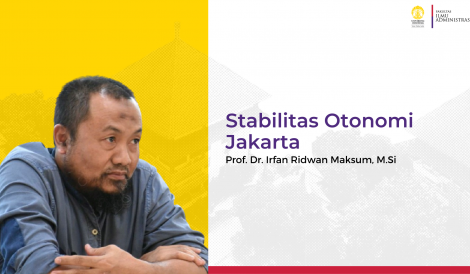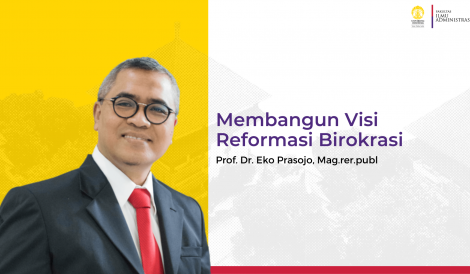Why is there an inconsistency between the President’s vision contained in various national priority programs, and the way the bureaucracy plans and budgets programs and activities based on government affairs?
Some of the government’s development targets have not been fully achieved, for example, the poverty rate.
If in 2019 the poverty rate was 9.41 percent, in 2022 the poverty rate would still be 9.54 percent. The poverty rate has not moved much, especially when compared to the budget provided for in the State Revenue and Expenditure Budget (APBN). For example, in 2019 it was IDR 563 trillion, namely IDR 320 trillion for burden reduction programs in the form of various social assistance (subsidies) and IDR 243.6 trillion in the form of productivity improvement programs through various financing funds and business development (data source: TNP2K, 2021) .
With funds of IDR 563 trillion, the poverty alleviation program in 2019 can only reduce poverty by 0.41 percent. In 2021, the poverty alleviation program budget of IDR 504.7 trillion is not even able to reduce the poverty rate, the poverty rate has actually increased from 9.78 percent in 2020 to 10.14 percent in 2021. This could also be due to the Covid-19 pandemic. 19.
How do we view these various data in the context of national development which is organized by the bureaucracy?
out of sync
The national development priority programs proclaimed by President Joko Widodo are generally very good. It’s just that, in program planning designs, it is often marked by various activities in ministries and agencies (K/L) that are not related to one another.
There is a mismatch between the President’s vision contained in various national priority programs, such as poverty alleviation, and the way the bureaucracy plans and budgets programs and activities whose basis is government affairs (sectoral). Each K/L still focuses on their own affairs, not in the perspective of an integrated national program. In 2021, with a total fund of IDR 504.7 trillion, the poverty alleviation program has 65 programs and 128 activities managed by 16 ministries/institutions.
What can we tell from this data and observations on the ground? There are four main problem characteristics of planning and budgeting for development programs and activities, including poverty alleviation.
First, scattered (scattered). The various programs and activities contained in the K/L Work Plan and Budget (RKA) are not complete in one logical framework to achieve the outcome and development impact to be achieved. Each program and activity stands alone in the perspective of the affairs of each K/L and is not connected to one another.
Second, sectoral ego. Programs and activities in each K/L have a high sectoral ego with a strong silo mentality. Coordination in planning and budgeting is often unable to break the culture and silo/ego structure that has been formed for a long time.
Third, duplicative. Various poverty alleviation activities are often planned simultaneously in several Ministries/Institutions; Similar activities exist in several government agencies.
In the end this will cause the fourth problem, namely inefficiency (inefficient). This is because various programs and activities have no clear outcomes and impacts, not measurable to achieve the objectives of the national priority program. In general, Ministries/Institutions only focus on achieving the activity’s output and absorbing the budget.
This is a major problem, because apart from the activity’s output not being connected to the outcome, many programs and activities are not connected between ministries/institutions in one logical framework, joint outcome and joint impact.
The root of the problem and the way out
Weak coordination in planning and budgeting for our national development has been widely discussed. However, this continues to occur in the preparation of RKA K/L every year. It is certain that the very massive budget that has been spent on poverty alleviation programs cannot quickly reduce the poverty rate.
The same thing happened in various national priority programs, such as food security, energy security, and business development. To reduce this problem, there are several things that can be proposed.
In coordination theory, there are actually nine levels of coordination in an organization (Metcalf, 2004). The lowest level is planning and policy making by each K/L, the second level is inter-K/L communication, and the third level is inter-K/L consultation in planning and policy making.
In general, the planning and budgeting coordination process is still at level three, whereas ideally coordination should be at level nine, namely collaboration and integration in planning and budgeting, including joint government strategies for program implementation mechanisms and activities (delivery mechanism).
To achieve level nine coordination, a joint outcome is needed in the national development priority program. In the sense that each program must have a joint outcome that is integrated with each other in the various activities planned and implemented by ministries/institutions. It’s like the government wants to make a car, every K/L that is given a role and task must produce a car part that can be assembled together in the end.
Currently, there is a Government Agency Performance Accountability System (SAKIP), in which every measure of government agency performance has begun to be better structured. However, SAKIP is still not strong enough to integrate various programs and activities across Ministries/Institutions because it is still independent. Because of this, a Government Performance Accountability System (SAKP) is needed, which is a system and means to force the relevant Ministries/Institutions to have joint outcomes in preparing programs and activities.
With SAKP, there will not only be collaborative activities in achieving outcomes and the impact of development programs, but also the quality of activities and budget efficiency. These indications can be seen from program consolidation, and the number of activities that will be significantly reduced, because when an activity is not related to a program’s outcome, that activity must be eliminated.
The budget efficiency results from SAKIP have reached IDR 112 trillion in 2020 (Ministry of PANRB, 2021). If SAKIP is connected with SAKP, more potential development budget efficiency can be obtained. Therefore, Presidential Regulation Number 29 of 2014 concerning Performance Accountability Systems for Government Agencies needs to be revised immediately into a Government Performance Accountability System which guarantees joint outcome-based collaboration across ministries/agencies in national planning and development.
Multisector collaboration
On the other hand, regarding the process of preparing work plans and budgets, Government Regulation Number 90 of 2010 must be revised immediately to open up multi-sectoral collaboration in planning and budgeting. So far, the affairs (sector) approach in annual planning and budgeting has been very strong because the basis is a trilateral meeting, not a multilateral meeting.
In addition, the planning and budgeting process is still in the nature of single loop learning because it does not allow feedback on budget execution in the current year. Likewise, the year-end evaluation in the Central Government Performance Report (LKjPP) must be a report on achievement of outcomes and development impacts of activities across ministries/institutions, not just reports on the implementation of activities oriented towards absorption of the budget.
To achieve this, one data is needed in the annual planning and budgeting process, as well as a technology-based information system that can integrate all K/L programs and activities (improving the KRISNA and SAKTI systems).
Source: Kompas Daily 15 October 2022








